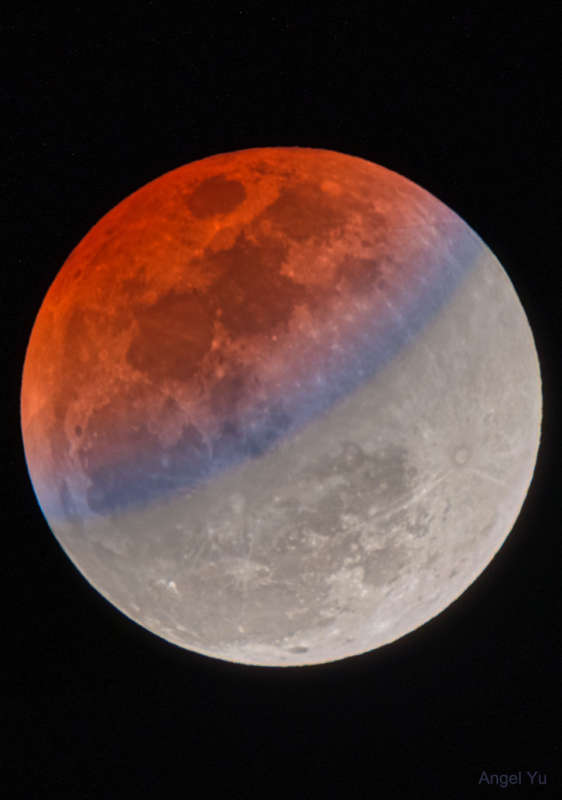Credit & Copyright: Angel Yu
Explanation:
What causes a blue band to cross the Moon during a lunar eclipse?
The blue band is real but usually quite hard to see.
The featured HDR image of last week's lunar eclipse, however -- taken from
Yancheng,
China --
has been digitally processed to equalize the
Moon's brightness and exaggerate
the colors.
The gray color of the bottom right is
the Moon's natural color, directly illuminated by sunlight.
The upper left part of the Moon is not directly lit by the Sun since it is
being eclipsed -- it in the
Earth's shadow.
It is faintly lit, though, by sunlight that has passed deep through
Earth's atmosphere.
This part of the Moon is red -- and called a
blood Moon -- for the same reason that Earth's sunsets are red:
because air scatters away
more blue light than red.
The unusual blue
band is different -- its color is created by sunlight that has passed high through
Earth's atmosphere, where
red light is better absorbed
by ozone than
blue.
A total eclipse of the Sun will occur tomorrow but,
unfortunately, totality be
visible only near the
Earth's South Pole.
Almost Hyperspace:
Random APOD Generator
1999 2000 2001 2002 2003 2004 2005 2006 2007 2008 2009 2010 2011 2012 2013 2014 2015 2016 2017 2018 2019 2020 2021 2022 2023 2024 2025 |
Январь Февраль Март Апрель Май Июнь Июль Август Сентябрь Октябрь Ноябрь Декабрь |
NASA Web Site Statements, Warnings, and Disclaimers
NASA Official: Jay Norris. Specific rights apply.
A service of: LHEA at NASA / GSFC
& Michigan Tech. U.
|
Публикации с ключевыми словами:
lunar eclipse - лунное затмение
Публикации со словами: lunar eclipse - лунное затмение | |
См. также:
Все публикации на ту же тему >> | |
